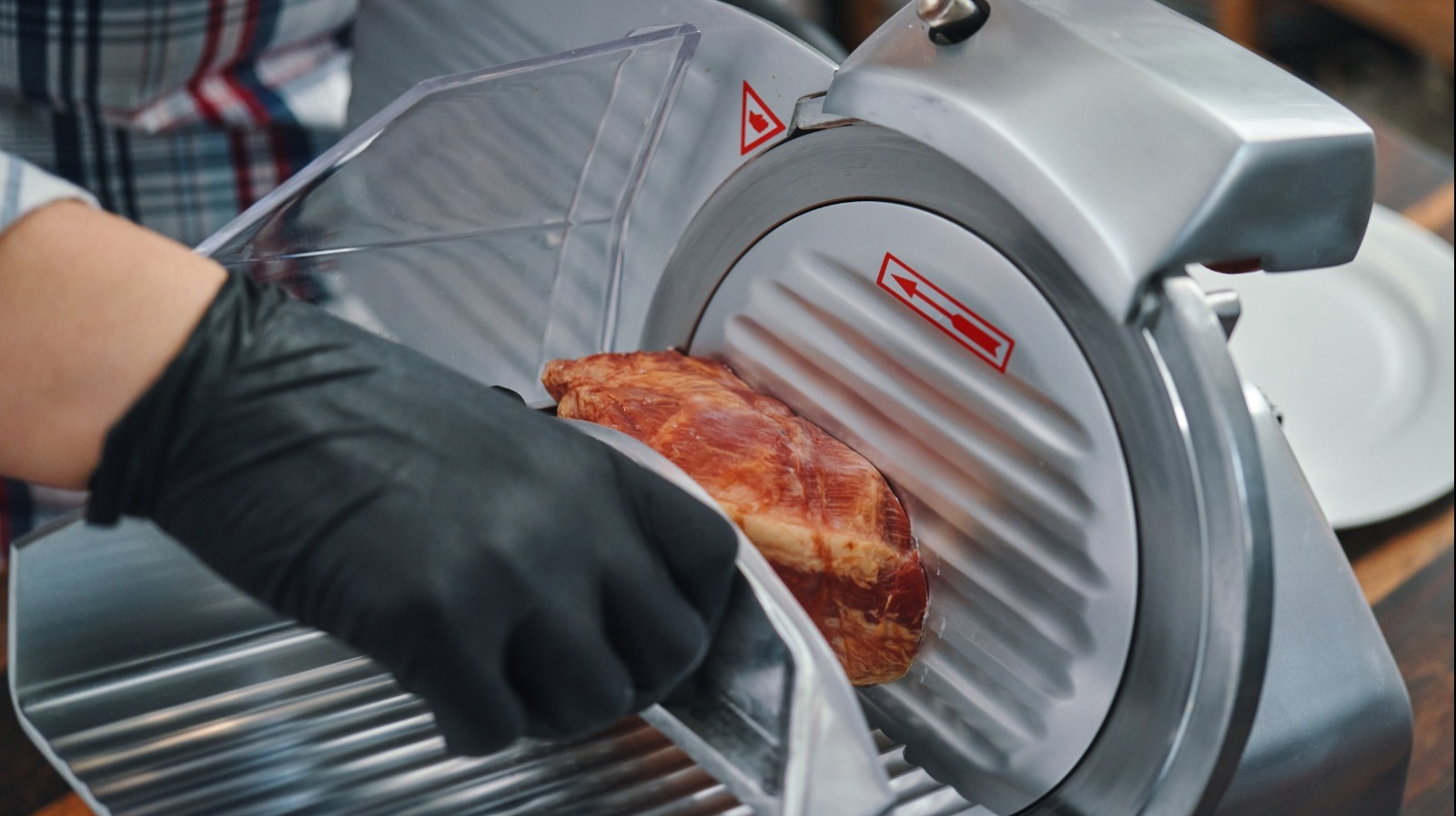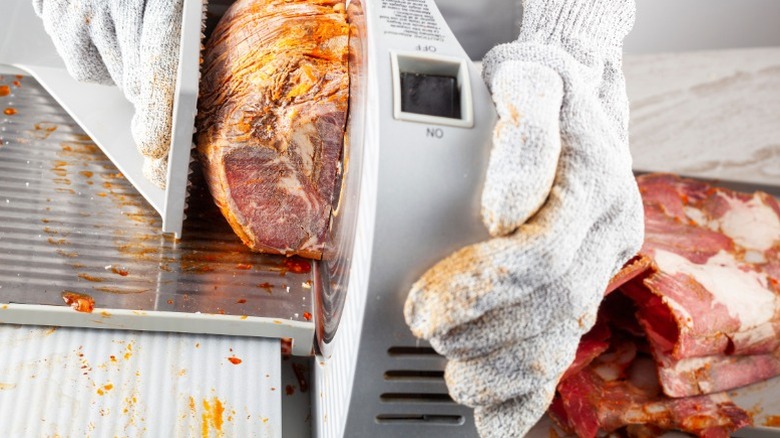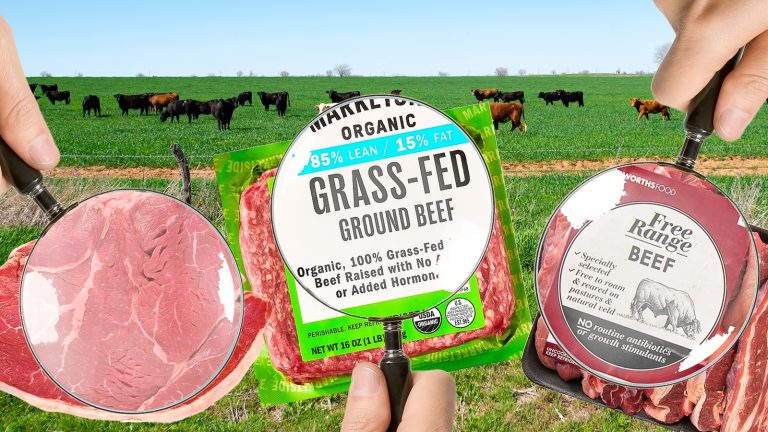We may receive a commission on purchases made from links.
Meat slicers, also known as deli slicers, are incredibly convenient and they can transform delicate meats like prosciutto or pancetta into perfectly thin, mouthwatering snacks with little to no effort. The meat slicer is a staple in every butcher shop and supermarket with a deli counter. But more and more often, it’s also an appliance found in households. Still, using one is no joke, so if you decide a home deli slicer is worth the hype, there’s one more inexpensive product you need to buy: cut-resistant gloves.
If you have a deli slicer, you probably think you bought all the tools you need to start making your own deli meat. However, using a heavy-duty meat slicer is a process that calls for some serious caution. They’re equipped with razor-sharp blades designed to effortlessly slice through pounds of delicate flesh quickly and efficiently. And surprise, surprise: Delicate flesh is exactly what your fingers are made of.
That’s why wearing protective gloves isn’t optional. Rather, it’s a safety practice you simply can’t afford not to follow, whether you’re doing a quick cleanup or simply slicing one last piece of that pastrami before the guests arrive. So whether you’re sharpening, cleaning, or removing the blade for honing, never forget that gloves are your No. 1 protection tool.
Choosing the right cutting gloves
While professional meat slicers can reach 5,000 watts of power, home models usually run on about 200. But that doesn’t mean you can skip the gloves. Even the weaker models spin at around 100 revolutions per minute, making them capable of slicing your favorite deli meats — and appendages — in a flash. That’s why cut-resistant gloves are on the list of safety steps that come with your slicer, even if they’re not on your bucket list of cool kitchen tools to own.
If you’re uncertain where to start looking, the American National Standards Institute’s nine-level scale can be very useful. It ranges from A1 to A3 for basic protection, A4 to A6 for handling sharp objects, and A7 to A9 for significant cutting risk. To use a deli slicer, something in the A7 to A9 range is best, though any cutting glove also reduces dexterity, so that’s a factor to consider. You definitely shouldn’t use anything lower than the A4 to A6 range. Always stick to FDA-approved food-safe materials like metal mesh, stainless steel, or HPPE (high-performance polyethylene). Options like the Exprosiflux cutting gloves (A5) or the Schwer SlicePro cut-resistant gloves (A9) are great picks for home cooks. They’re machine-washable and resilient but still flexible.
All of that said, it’s important to note that there’s no such thing as a completely cut-proof glove. Still, taking a minute to put on the gloves is still a much better choice than risking a trip to the ER.






